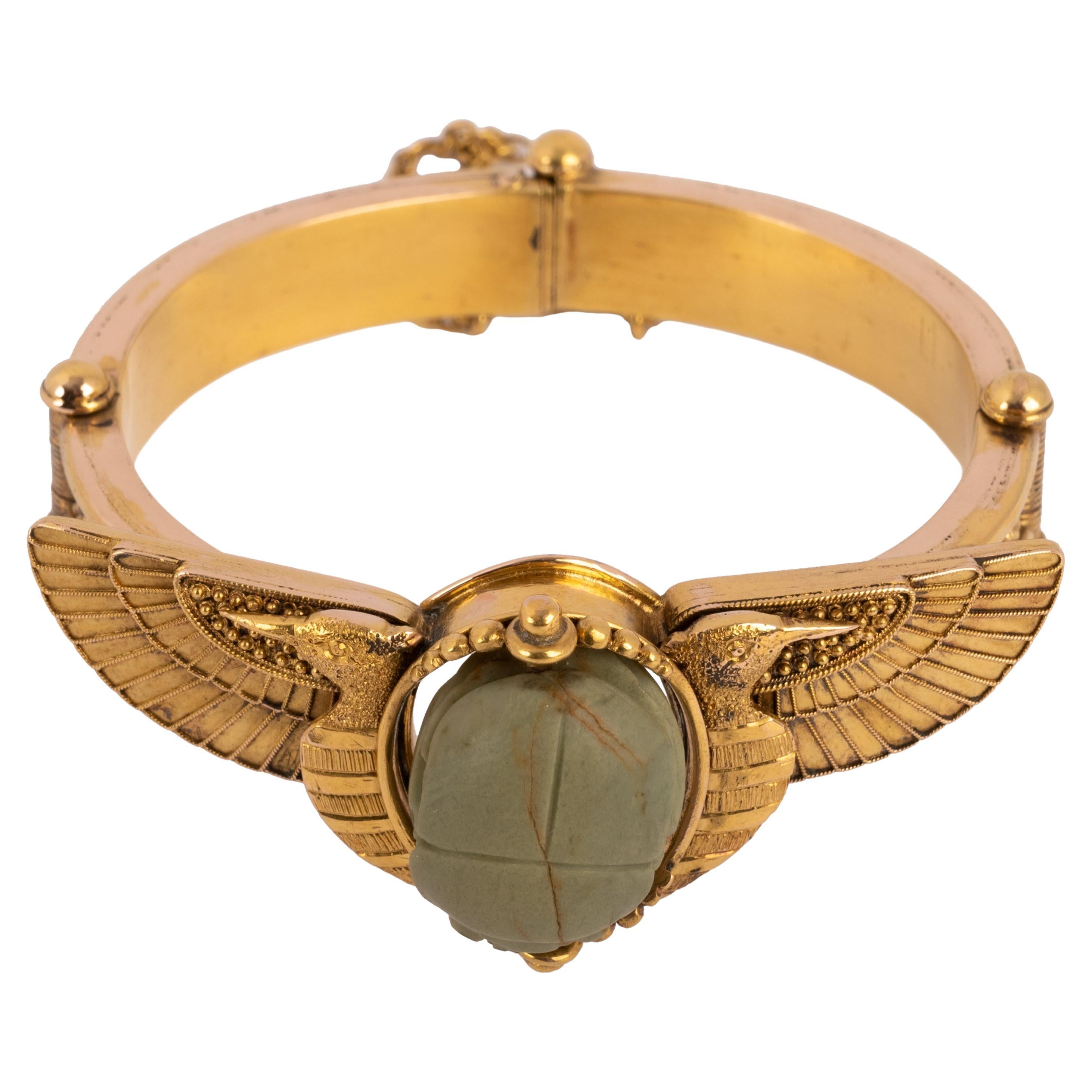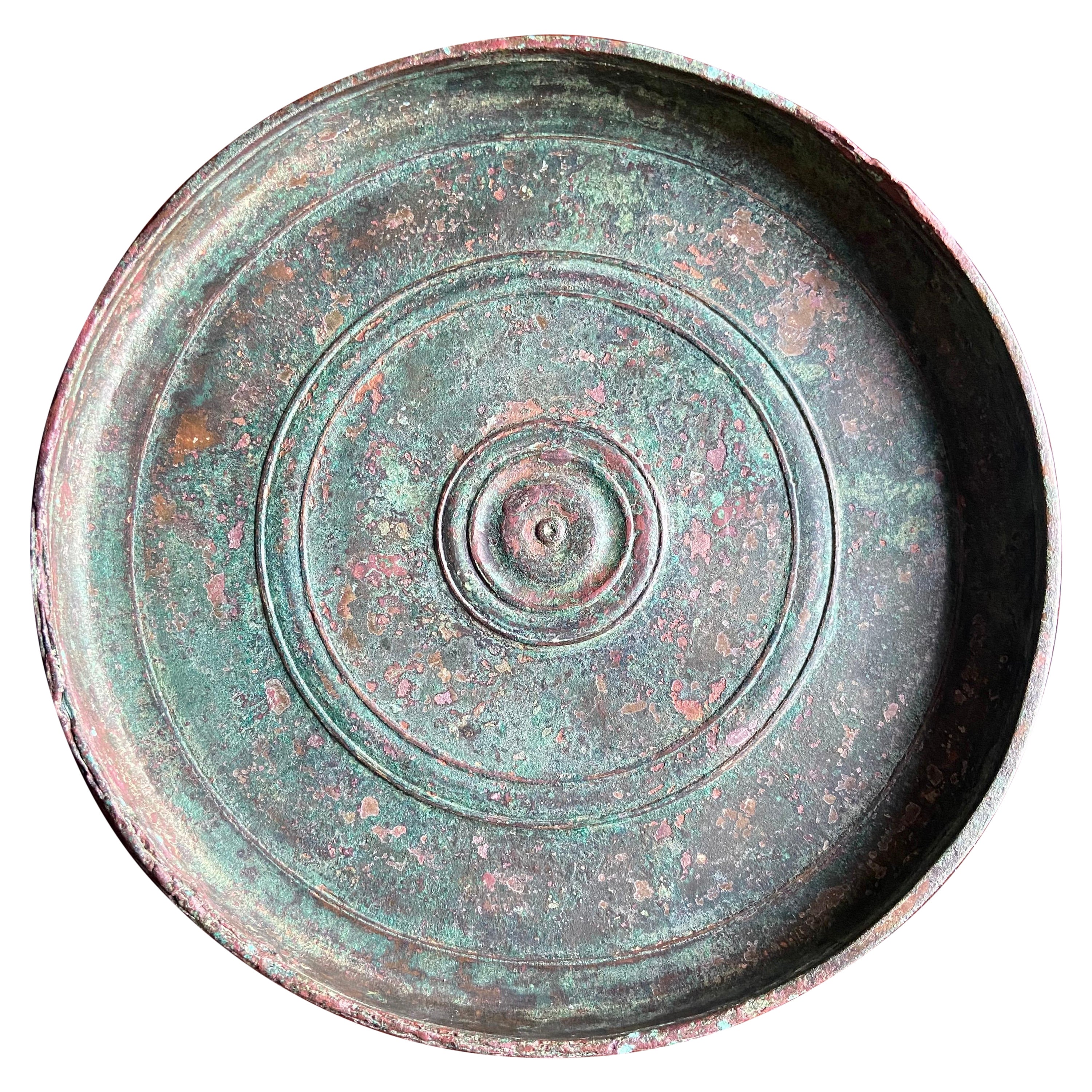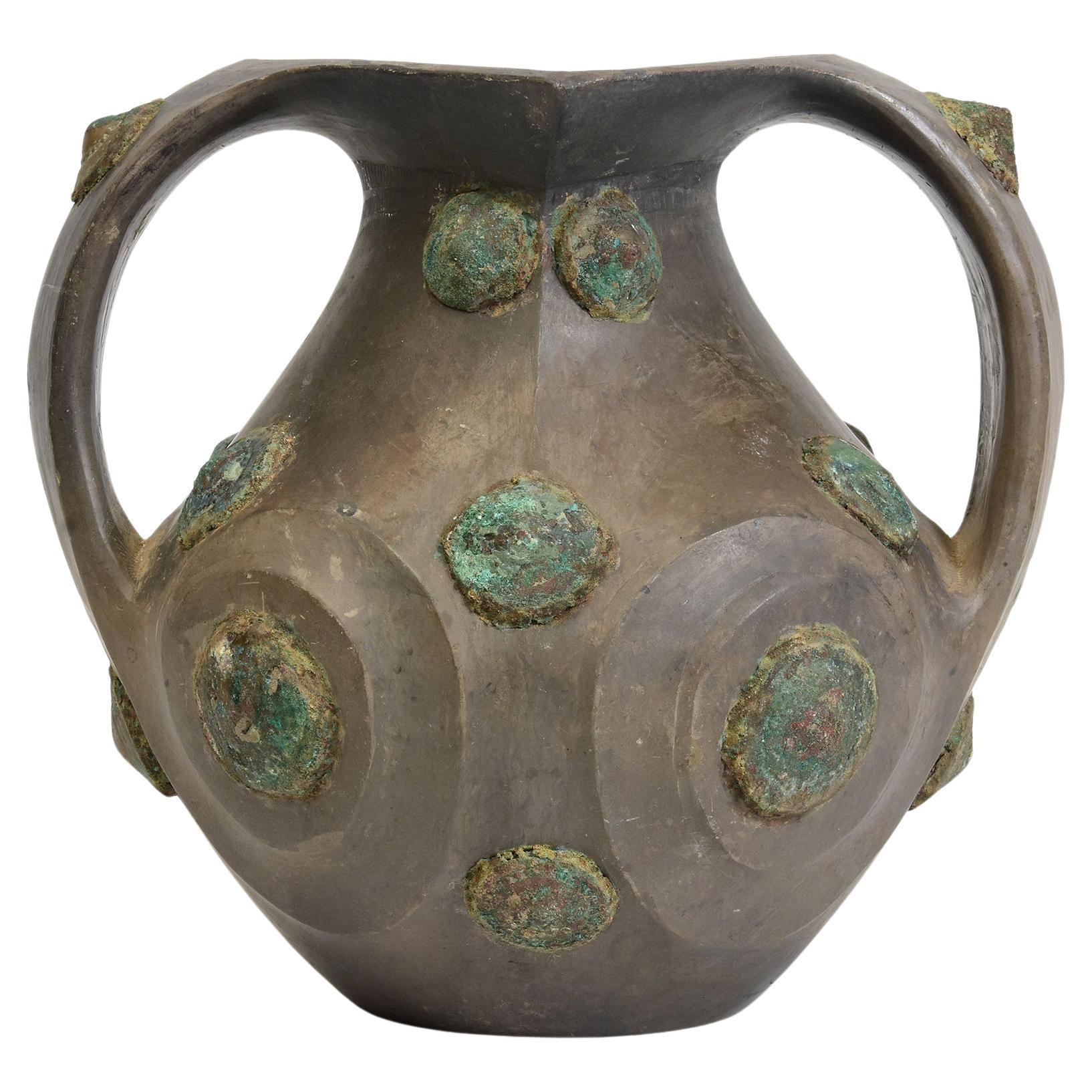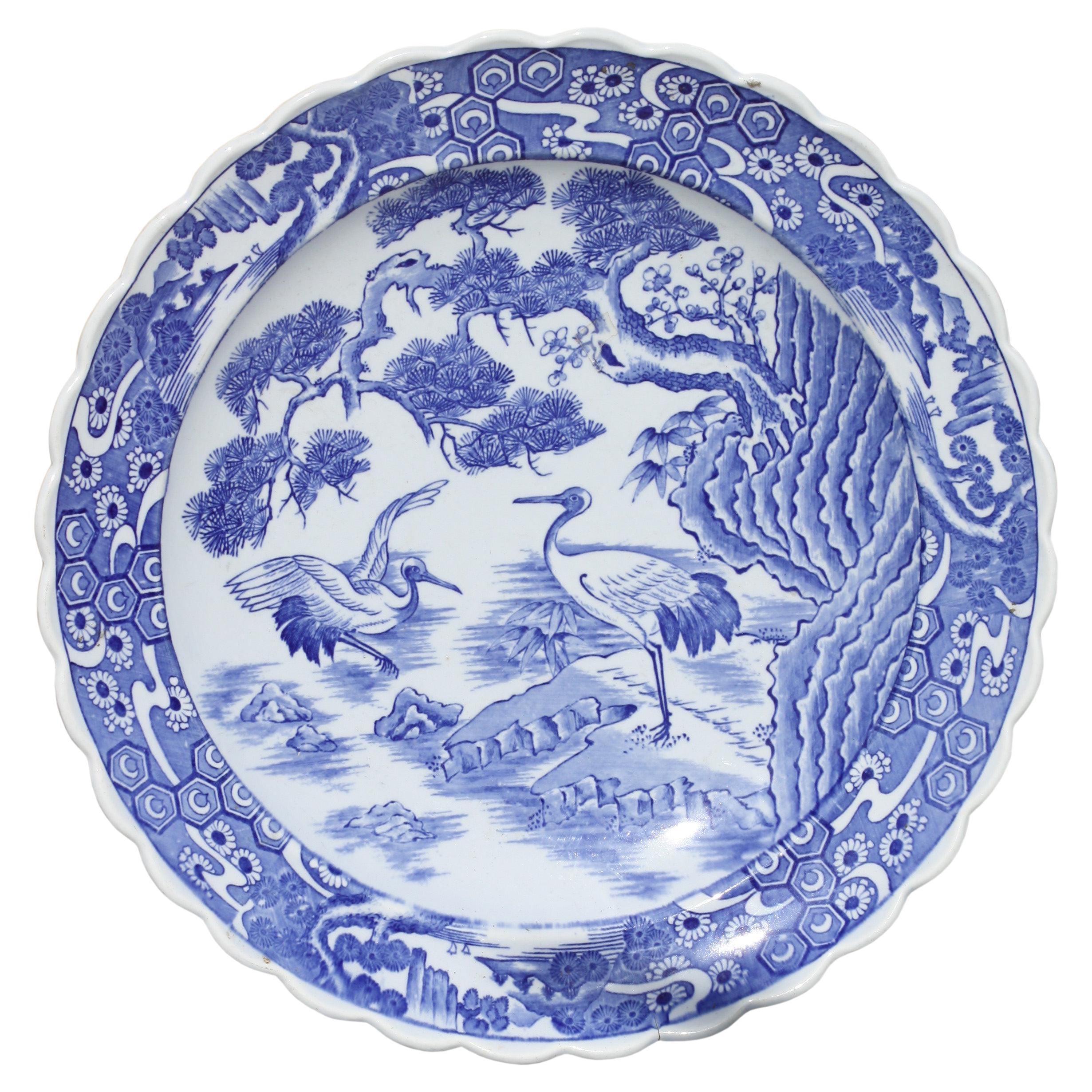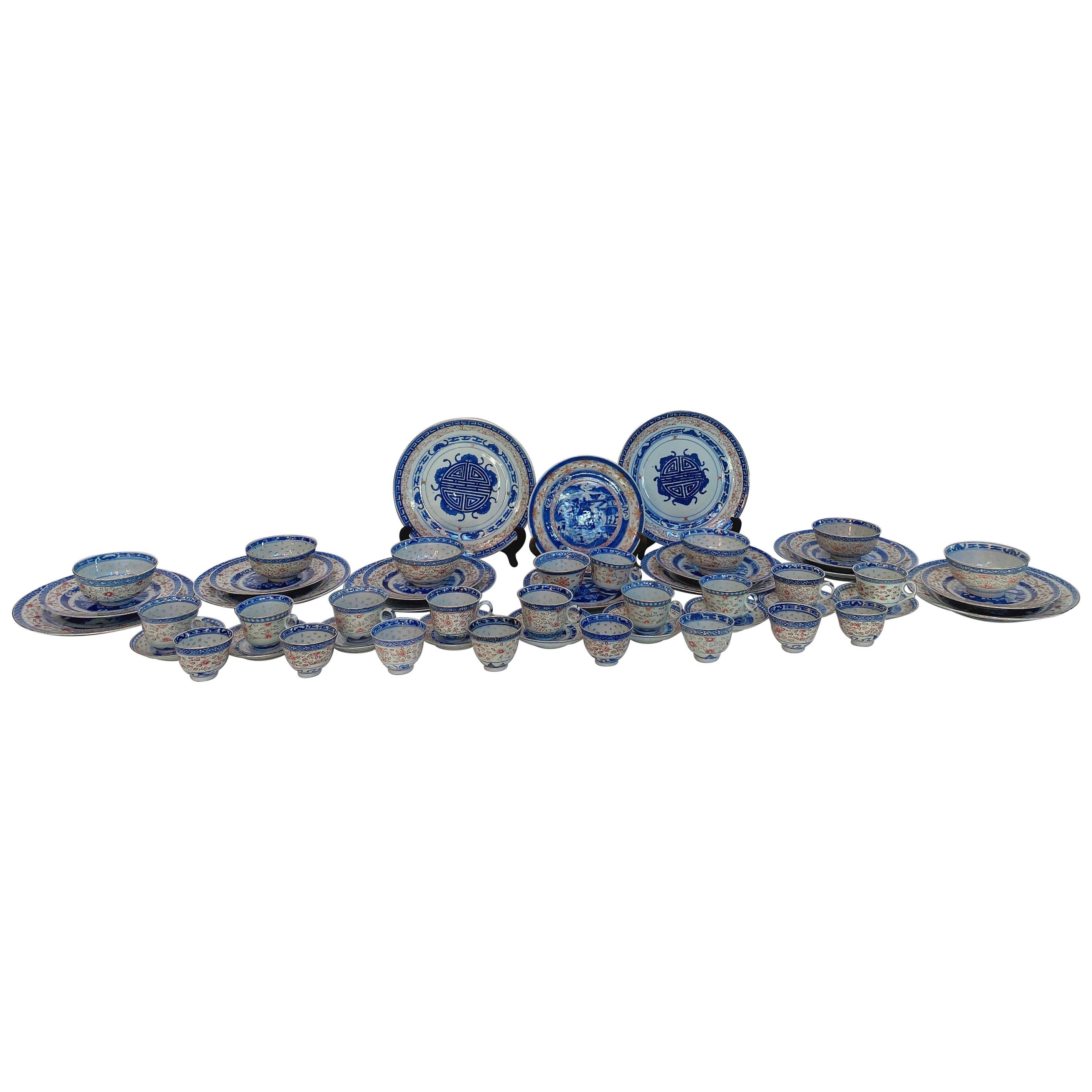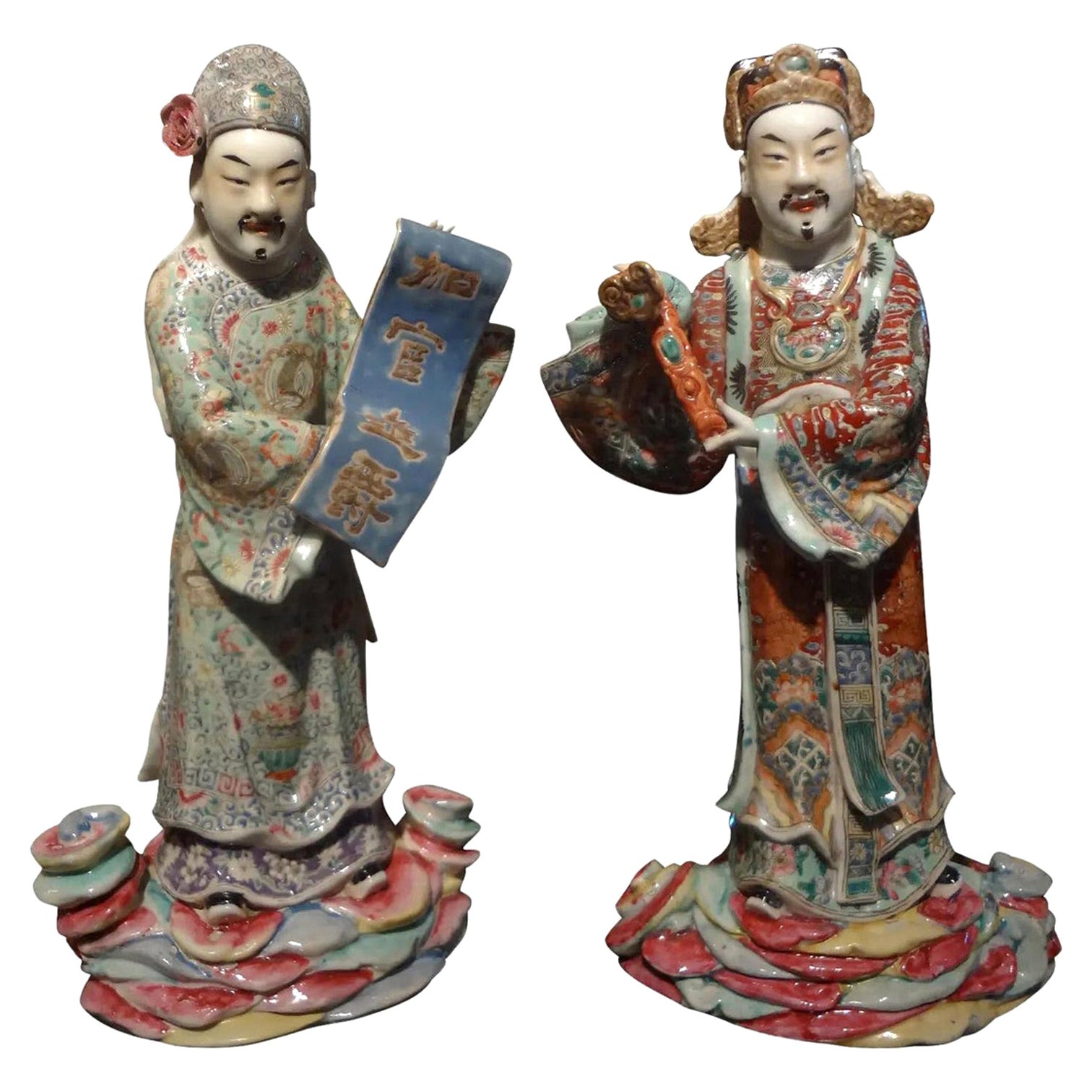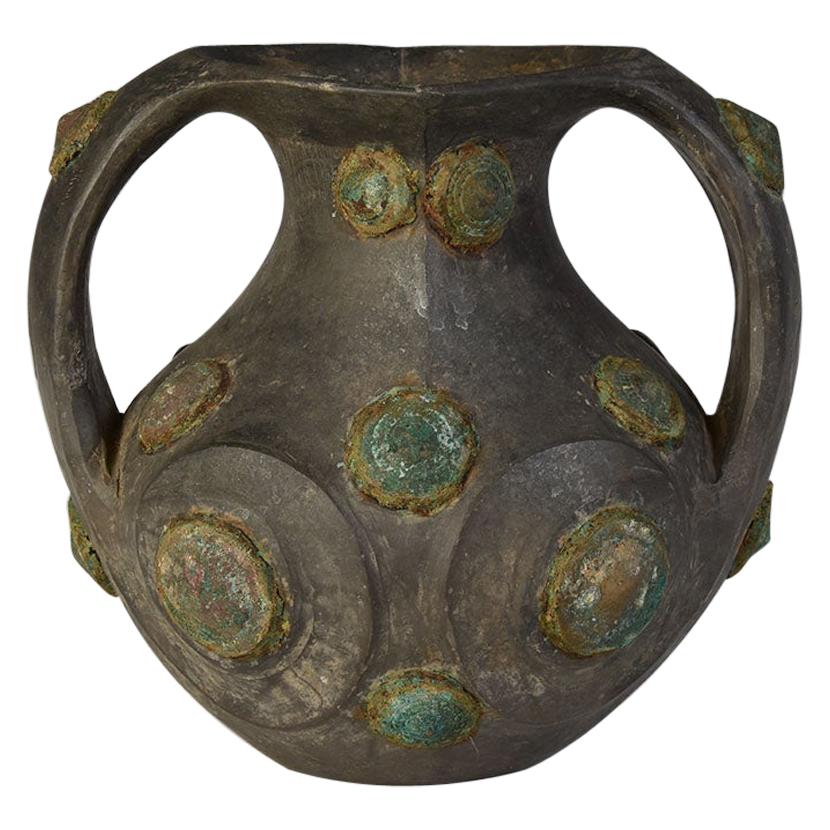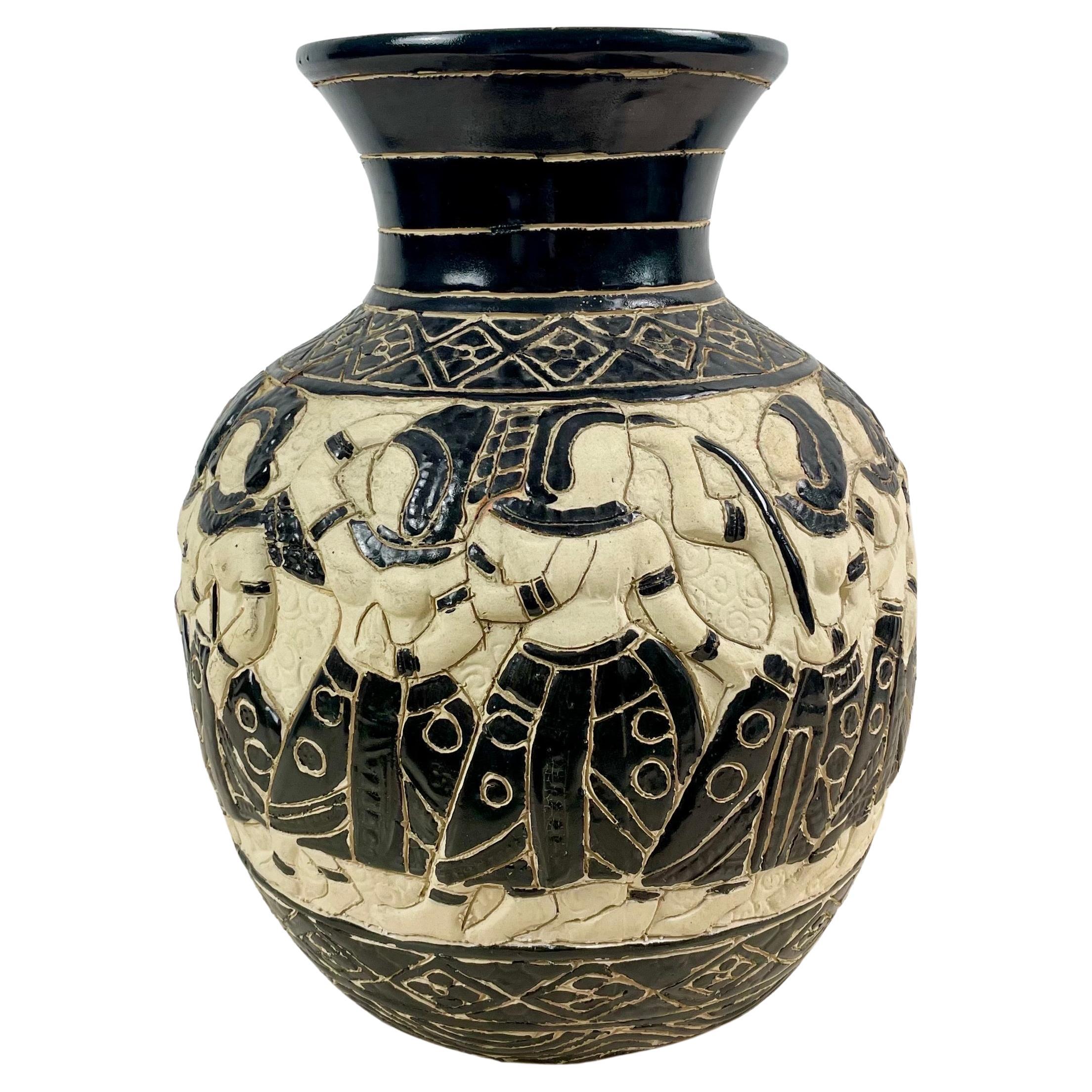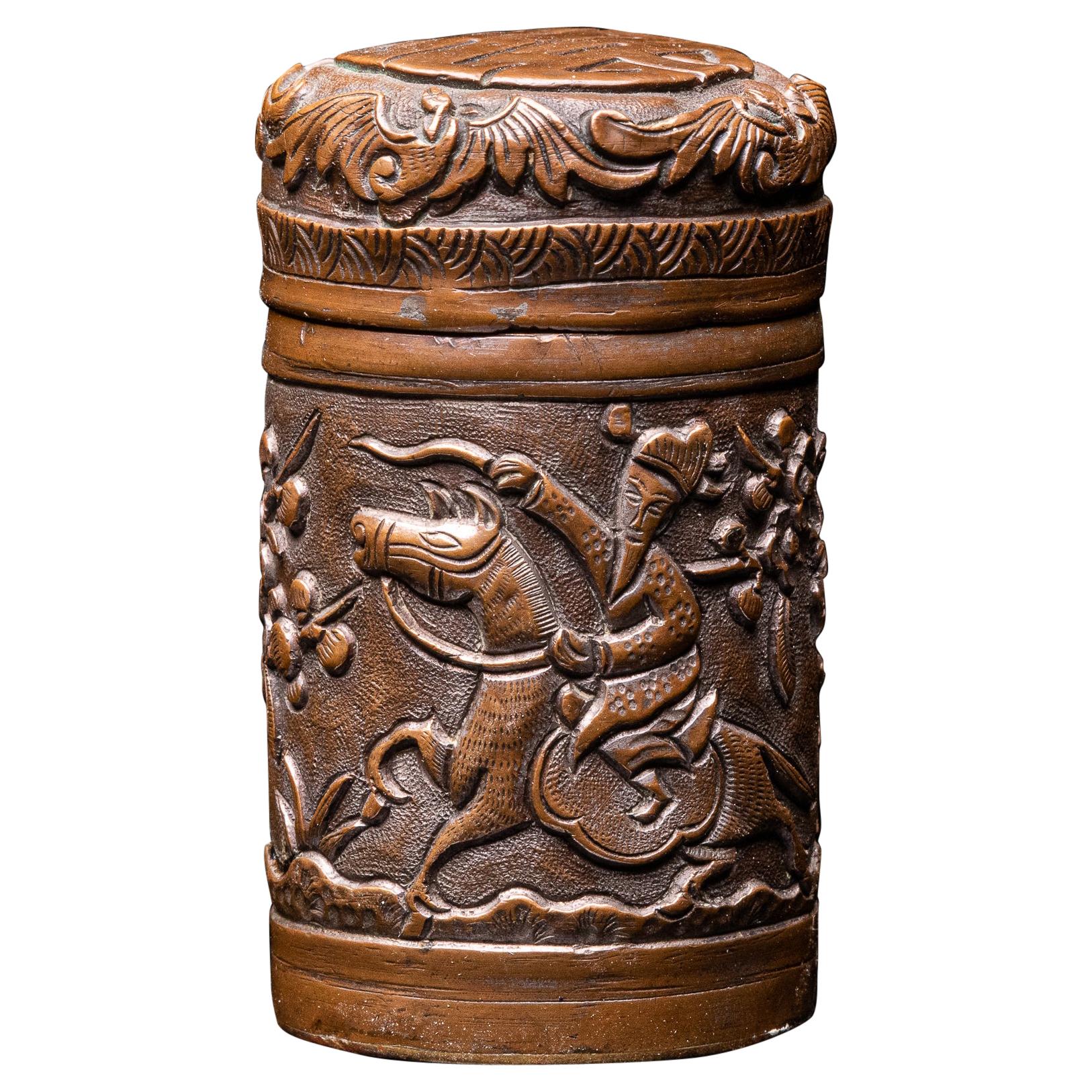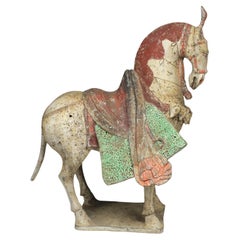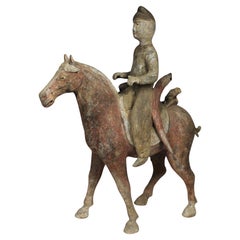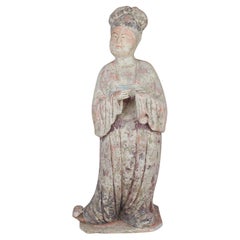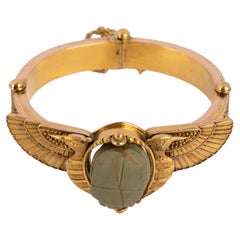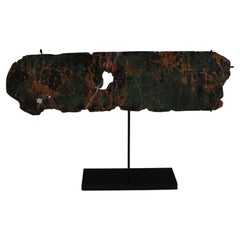
Etruscan sheet decorated
View Similar Items
Want more images or videos?
Request additional images or videos from the seller
1 of 7
Etruscan sheet decorated
About the Item
- Dimensions:Height: 2.84 in (7.2 cm)Width: 10.71 in (27.2 cm)Depth: 0.08 in (2 mm)
- Style:Greco Roman (Of the Period)
- Materials and Techniques:Bronze,Repoussé
- Place of Origin:
- Period:
- Date of Manufacture:7th – 5th Century B.C
- Condition:Wear consistent with age and use.
- Seller Location:EL CAMPELLO, ES
- Reference Number:1stDibs: LU7382235814752
About the Seller
5.0
Vetted Seller
These experienced sellers undergo a comprehensive evaluation by our team of in-house experts.
Established in 2011
1stDibs seller since 2022
8 sales on 1stDibs
More From This SellerView All
- Chinese statuette of a horseLocated in EL CAMPELLO, ESITEM: Statuette of a horse MATERIAL: Pottery CULTURE: Chinese, Northern Wei Dynasty PERIOD: 386 – 535 A.D DIMENSIONS: 404 mm x 350 mm x 230 mm CONDITION: Good condition. Includes Th...Category
Antique 15th Century and Earlier Chinese Tang Antiquities
MaterialsPottery
- Chinese statuette of a horse with riderLocated in EL CAMPELLO, ESITEM: Statuette of a horse with rider MATERIAL: Pottery CULTURE: Chinese, Tang Dynasty PERIOD: 618 – 907 A.D DIMENSIONS: 520 mm x 420 mm x 180 mm CONDITION: Good condition. Includes ...Category
Antique 15th Century and Earlier Chinese Tang Antiquities
MaterialsPottery
- Chinese statuette of a Fat LadyLocated in EL CAMPELLO, ESITEM: Statuette of a Fat Lady MATERIAL: Pottery CULTURE: Chinese, Tang Dynasty PERIOD: 618 – 907 A.D DIMENSIONS: 655 mm x 265 mm x 210 mm CONDITION: Good condition. Includes Thermoluminescence test by Laboratory Kotalla (Reference 05B101123). Includes Certificate of Authenticity from Dutch gallery PROVENANCE: Ex Belgian private collection, acquired from Dutch art gallery Comes with Certificate of Authenticity and Export Licence. If you are from outside the European Union, we will have to apply for the export licence again for your country, this takes 4 to 6 weeks. Due to the fragility and size of this piece, it can only be shipped within the European Union, United Kingdom and neighbouring countries that can be transported by road by private courier (door to door). This beautifully-finished ceramic attendant was made during what many consider to be China’s Golden Age, the Tang Dynasty. It was at this point that China’s outstanding technological and aesthetic achievements opened to external influences, resulting in the introduction of numerous new forms of self-expression, coupled with internal innovation and considerable social freedom. The Tang dynasty also saw the birth of the printed novel, significant musical and theatrical heritage and many of China’s best- known painters and artists. The Tang Dynasty was created on the 18th of June, 618 AD, when the Li family seized power from the last crumbling remnants of the preceding Sui Dynasty. This political and regal regime was long-lived, and lasted for almost 300 years. The imperial aspirations of the preceding periods and early Tang leaders led to unprecedented wealth, resulting in considerable socioeconomic stability, the development of trade networks and vast urbanisation for China’s exploding population (estimated at around 50 million people in the 8th century AD). The Tang rulers took cues from earlier periods, maintaining many of their administrative structures and systems intact. Even when dynastic and governmental institutions withdrew from management of the empire towards the end of the period – their authority undermined by localised rebellions and regional governors known as jiedushi –the systems were so well- established that they continued to operate regardless. The artworks created during this era are among China’s greatest cultural achievements. It was the greatest age for Chinese poetry and painting, and sculpture also developed (although there was a notable decline in Buddhist sculptures following repression of the faith by pro-Taoism administrations later in the regime). It is disarming to note that the eventual decline of imperial power, followed by the official end of the dynasty on the 4th of June 907, hardly affected the great artistic turnover. During the Tang Dynasty, restrictions were placed on the number of objects that could be included in tombs, an amount determined by an individual’s social rank. In spite of the limitations, a striking variety of tomb furnishings – known as mingqi – have been excavated. Entire retinues of ceramic figures – representing warriors, animals, entertainers, musicians, guardians and every other necessary category of assistant – were buried with the dead in order to provide for the afterlife. Warriors (lokapala) were put in place to defend the dead, while horses/ camels were provided for transport, and officials to run his estate in the hereafter. Of all the various types of mingqi, however, there are none more elegant or charming than the sculptures of sophisticated female courtiers, known – rather unfairly – as “fat ladies...Category
Antique 15th Century and Earlier Chinese Tang Antiquities
MaterialsPottery
- Egyptian seal with Ptah, Anubis and vultureLocated in EL CAMPELLO, ESITEM: Seal with Ptah, Anubis and vulture MATERIAL: Stone CULTURE: Egyptian PERIOD: Middle Kingdom, 2040 – 1782 B.C DIMENSIONS: 39 mm x 45 mm x 32 mm CONDITION: Good condition PROVENA...Category
Antique 15th Century and Earlier Egyptian Egyptian Antiquities
MaterialsStone
- Greek aryballos depicting a horse headLocated in EL CAMPELLO, ESITEM: Aryballos depicting a horse head MATERIAL: Pottery CULTURE: Greek, Corinthian PERIOD: 7th Century B.C DIMENSIONS: 62 mm x 55 mm diameter CONDITION: Good condition PROVENANCE: E...Category
Antique 15th Century and Earlier Greek Classical Greek Antiquities
MaterialsPottery
- Chinese statuette of a horse with musicianLocated in EL CAMPELLO, ESITEM: Statuette of a horse with musician MATERIAL: Pottery CULTURE: Chinese, Tang Dynasty PERIOD: 618 – 907 A.D DIMENSIONS: 420 mm x 365 mm x 145 mm CONDITION: Good condition. Includ...Category
Antique 15th Century and Earlier Chinese Tang Antiquities
MaterialsPottery
You May Also Like
- Special Antique Decorated Porcelain Cache PotLocated in North Salem, NYSpecial Antique Blue & White Porcelain cache pot. Circa 1760.Category
Antique 18th Century Planters, Cachepots and Jardinières
MaterialsPorcelain
$2,480 Sale Price20% Off - Antique 22 Karat Gold Egyptian Etruscan Revival Scarab Beetle Bracelet 1870Located in Portland, ORA rare antique Egyptian Revival 22 karat gold bracelet, circa 1870. Gold weight 38.10 grams. This continental gold bracelet tests as 22 karat gold and is fitted with a green faience ancient Egyptian scarab, engraved with Hieroglyphics. The front of the bracelet is modelled as a twin headed winged ibis amulet and is fitted to the center with a faience scarab, which swivels to show the Hieroglyphics. The bracelet band having Etruscan style beaded granulated decoration and a strong closing clasp and opening chain. Condition is excellent. The bracelet was last purchased in 1968 from the prestigious London antique jewelery dealers; Anne Bloom located at 124 New Bond Street London for 1500 (Great British Pounds...Category
Antique 1870s French Egyptian Revival Antiquities
MaterialsGold
$7,960 Sale Price20% OffFree Shipping - Chinese Polychrome-Decorated Carved Wood Figure of a BodhisattvaLocated in West Palm Beach, FLA Chinese polychrome-decorated carved wood figure of a Bodhisattva Standing regally with her hands in vitarka mudra, a five-pointed diadem set on her head, the angular face with bro...Category
20th Century Sculptures and Carvings
MaterialsWood
- Highly Decorated Ancient Hellenistic Bronze Mirror with LidLocated in Sofia, BGHighly decorated ancient Roman round bronze hand mirror in very good condition with lovely patina without a cover. Possibly there was a held attached to it but now only the three sma...Category
Antique 15th Century and Earlier European Antiquities
MaterialsBronze
- Han Dynasty, Rare Antique Chinese Pottery Amphora Decorated with Bronze OrnamentLocated in Sampantawong, THRare antique Chinese pottery amphora decorated with bronze ornament. In the past, this kind of vessel was used for wine container. Age: China, Han Dynasty, B.C. 206 - A.D. 220 Size...Category
Antique 15th Century and Earlier Chinese Antiquities
MaterialsPottery
- Japanese Blue and White Decorated Porcelain Plate, Meiji Period (1868-1912)Located in West Palm Beach, FLJAPANESE BLUE AND WHITE DECORATED PORCELAIN PLATE, MEIJI PERIOD (1868-1912) the underside with impressed signature, with a tightly scalloped edge, border of stylized motifs, the cen...Category
20th Century Antiquities
MaterialsPorcelain
Recently Viewed
View AllMore Ways To Browse
Bronze Etruscan Horse
Japanese Wooden Carved Elephant With Lid
Japanese Carved Wooden Elephant
Mandarin Hat
It Is
Modern Bes
Modern Glass
Round Top
Modern Century Armchairs
Wood Elements
Gold Silver Furniture
Louis Dining
Mid Century Cocktail
Italian Vessel
Mid Century Frame Chair
Made In Britain
Modern New Dining Tables
Italian Engraved

